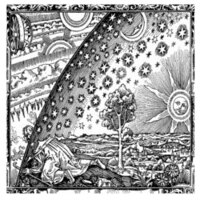Speaker
Description
The Euclid survey will soon deliver the most extensive and densely populated galaxy catalogue ever observed, reaching objects as distant as 10 billion light-years away from us. By precisely mapping the 3D galaxy distribution, the spectroscopic catalogue presents a unique opportunity for measuring the expansion of the Universe and the growth of structures with sub-percent precision - a requirement for a definitive answer on the validity of general relativity.
In this talk, I will guide you through the planned Euclid analysis by introducing the spectroscopic catalogue and describing three pivotal probes selected to extract cosmological information. We will see how the signature of Baryonic acoustic oscillations and redshift-space distortions in the two-point statistics of the galaxy distribution allow us to measure the expansion of the Universe and the growth of structure, respectively, and explore the study of the morphology and N-point statistics of underdense regions (cosmic voids) as a complementary probe to the clustering studies.

